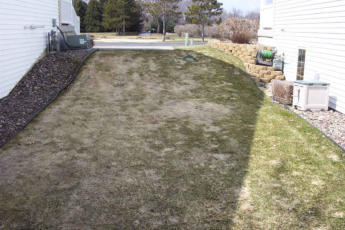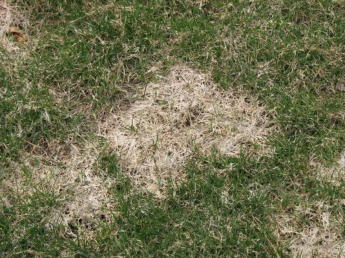
Snow Mold



Ultralawn Incorporated
1055 East 260th Street
Euclid, OH 44132
216.731.7756
440.951.3738
Office hours Monday-Friday 9-3 call today with any questions

Symptoms: Damage from snow mold usually becomes
apparent as the snow melts and exposes the grass in late
winter. Snow mold symptoms consist of roughly circular
patches of dead and matted grass blades. Just after the snow
melts and while the grass remains moist, it may be possible to
tell between the two common types of snow mold found in
Northeast Ohio by their color. The web-like fungus of pink
snow mold may initially look white and mature to a faint pink
to salmon color. Gray snow mold is white to gray in color. Both
types of fungi will disappear quickly as the grass dries. A useful
identifying characteristic of gray snow mold is the presence of
tiny brown to black masses on the blades and in the leaf
sheaths of infected plants. Pink snow mold does not produce
black masses on the blades and in the leaf sheaths. It is useful
to determine whether the disease is pink or gray snow mold because gray snow mold rarely damages more
than the blades of the grass. Lawns with gray snow mold can be expected to recover fairly quickly even when
damage appears extensive. Pink snow mold, however, may invade the crowns and roots causing more serious
injury. It is not unusual for both types of snow mold to be found in the same area. All common lawn grasses
may be infected, but Kentucky bluegrass and fescue lawns are the least susceptible to severe damage.
Season: Snow mold fungi are active at temperatures just
above freezing in moist conditions. These conditions occur
most frequently under snow cover or anything else that covers
the grass, such as fallen tree leaves. Gray snow mold usually
only occurs after prolonged snow cover. Pink snow mold may
be active in cool, wet conditions from late fall through early
spring even in the absence of snow or other covers, which
greatly enhances its potential as a damaging disease.
Disease Cycle: Snow mold fungi remain inactive during the
warm months when other disease fungi are most active. They
survive in thatch and on plants. As cool, wet weather develops,
the fungi begin to grow and infect grass plants. Like all living
organisms, these fungi require moisture to survive. The cold,
dry air of winter prevents active growth. The shelter of leaves,
snow or any other cover on the grass maintains the necessary
moisture for growth. Optimal conditions for snow mold activity occur when snow falls suddenly and remains on
ground that has not yet frozen. In such cases, grass is often still lush, providing an excellent source of food for
the fungi.
Cultural Management: The most important means of preventing or reducing snow mold problems in lawns is
the care of the grass at the end of the fall season. As long as the grass continues to grow, it must be mowed. Fall
fertilizer should be timed so that it will not influence additional growth to the grass. Fall fertilizers should be
applied more than four weeks before dormancy. Because snow mold activity is greatest when covered with
moist conditions, all leaves or other materials should be removed from the lawn. In addition, it is best to avoid
piling snow deeply along sidewalks and driveways where it will form a long-lasting snow bank.
Chemical Management: Fungicide applications for snow mold are not recommended. The cultural practices
described above are the most effective means of reducing snow mold damage. In most cases, the grass will
resume healthy growth in the spring, even though damage may appear widespread when the snow melts. It is
important to lightly rake the affected areas up to allow airflow and photosynthesis to occur.

This particular area does not get much sun and the snow is
more apt to hanging around longer between thaws.

Close up picture of “matted” grass from snow mold.


















